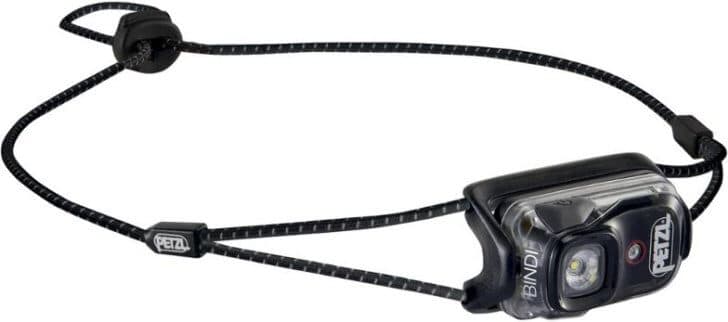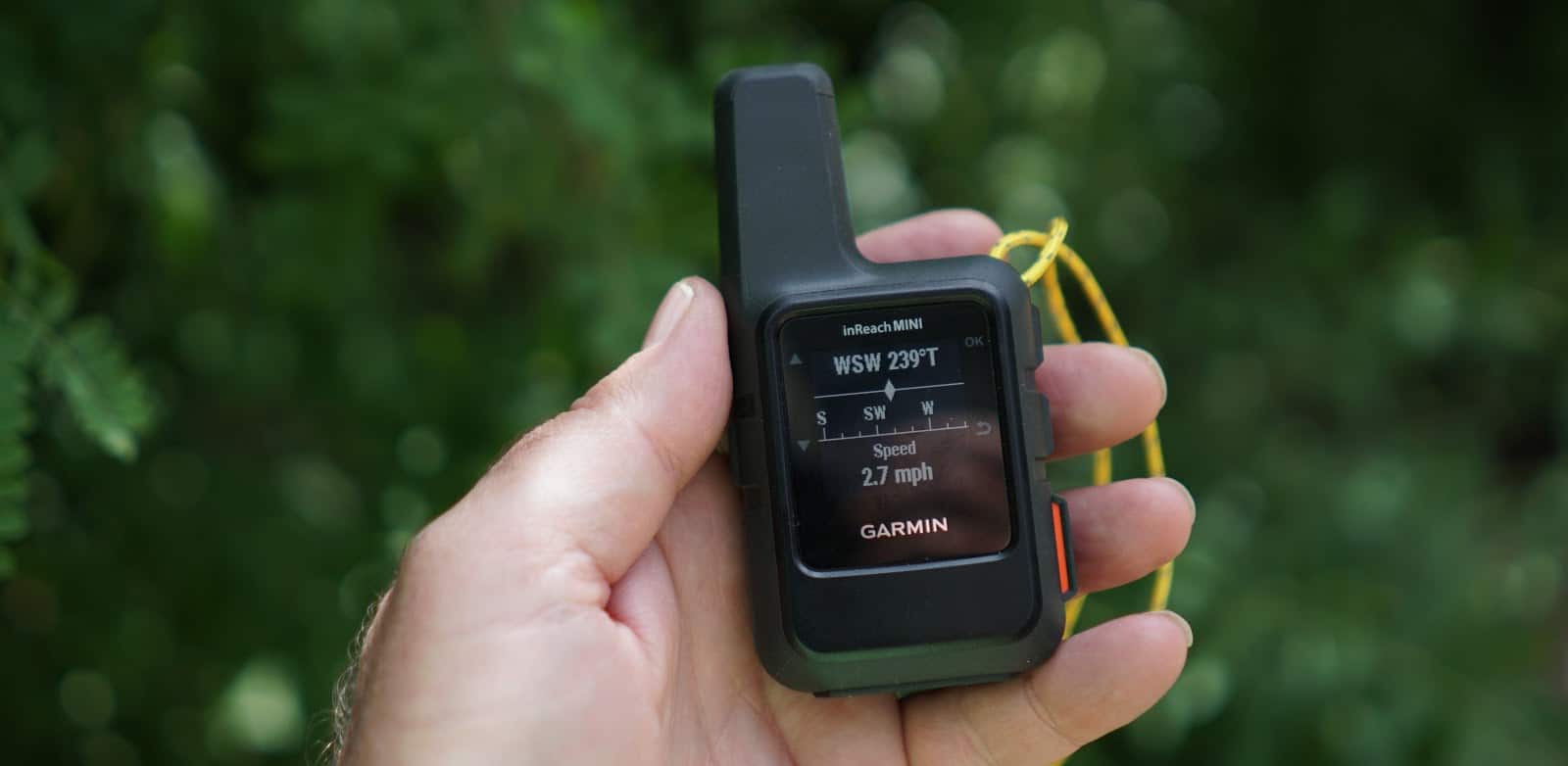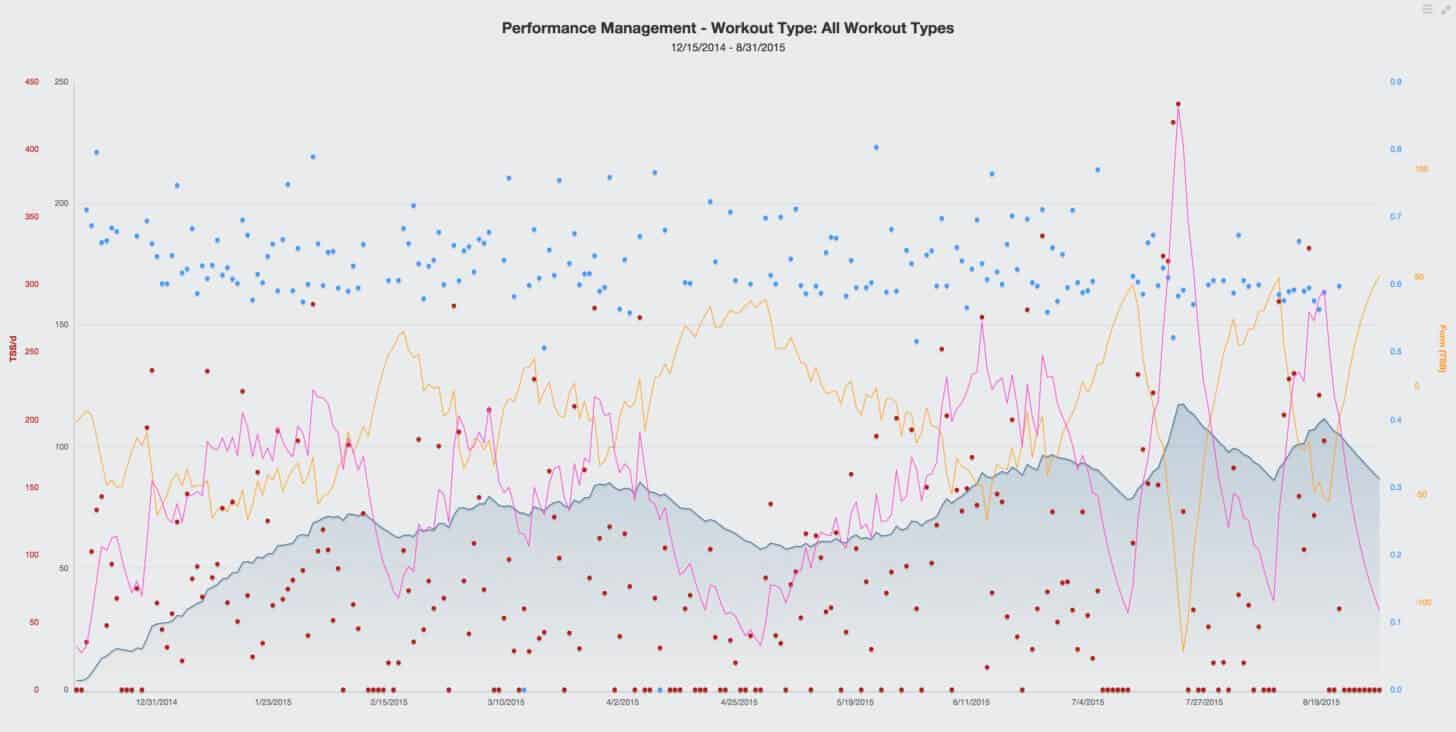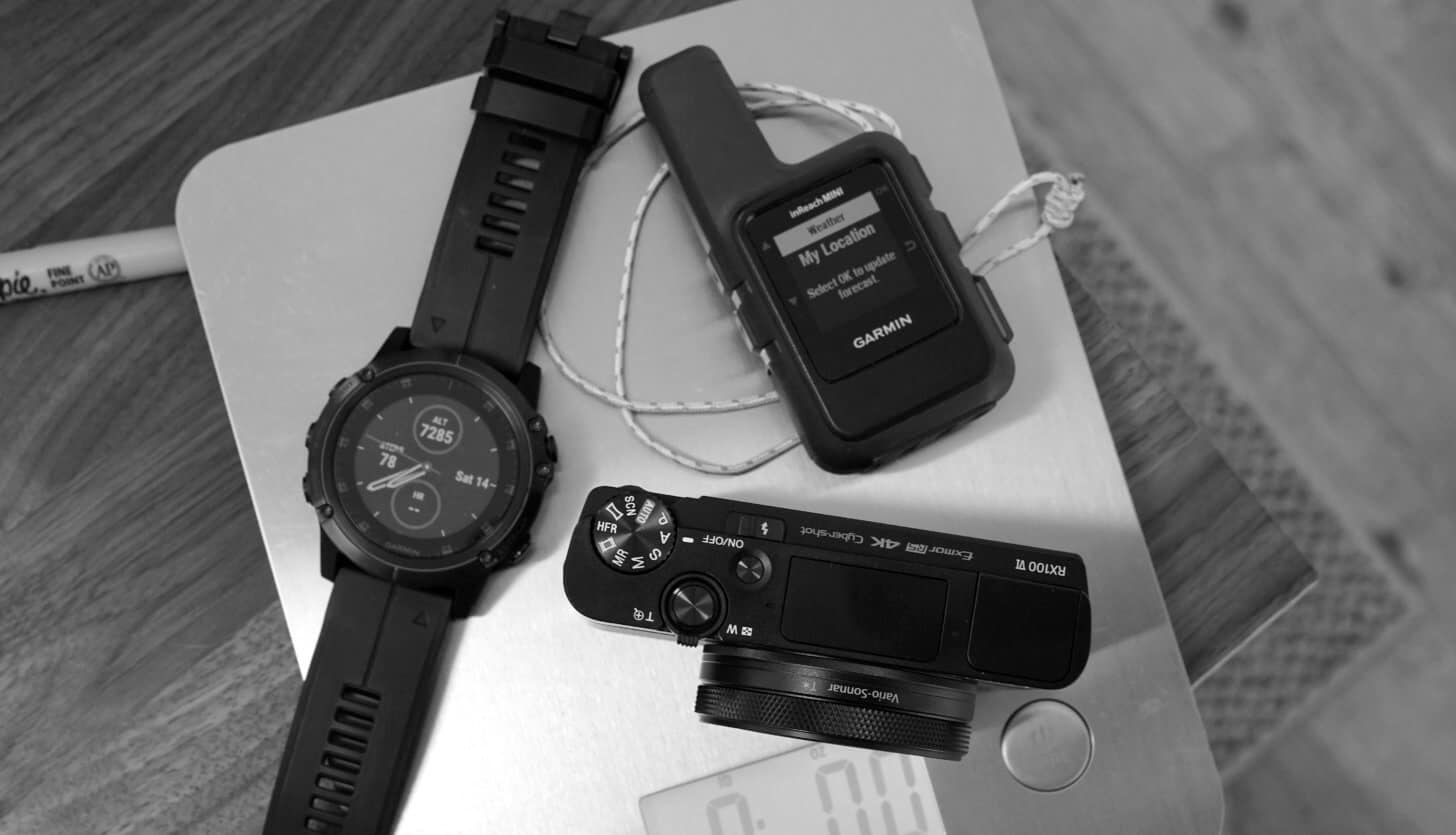I’ve been immersing myself in the study of backcountry electronics this year, including technologies for lighting, navigation, and photo/video. This article highlights some gear that I’m using this summer, and how I’m calculating, and managing rechargeable battery needs.

200 Lumen Headlamp, 1.2 oz
The use of electronic devices in the backcountry is a relatively new phenomenon. Of course, battery-0perated flashlights have been around awhile, so those don’t really count. But with the increasing prevalence of rechargeable electronics found in hiker kits, the relatively new genre of USB-rechargeable lights can’t be ignored. As an example, check out the new Petzl Bindi headlamp, which weighs a scant 1.2 oz yet has the power to deliver a 200-lumen beam. $59.95 from REI.
In a task-lighting mode, the Bindi delivers dozens of hours of operation. At 200 lumens, the battery will drain fast, but it’s nice to have that much light for at least a few hours if needed for difficult navigation.
1″ Sensor, 24-200mm Zoom Point and Shoot Camera, 10.6 oz
If you’ve followed my photography journey for more than a few years, you’ll know that I’ve been making images and movies with the Sony RX100 series was released in the summer of 2012. Since then, it’s gone through several iterations, and the newest Sony RX100 Mark VI version is a very significant upgrade:
- Long Lens: 24-200mm (equivalent) lens. An incredible achievement for a camera that’s pocketable, has a mid-sized sensor, and only weighs 10.6 oz (I verified the weight – that includes the battery and SD card).
This is a game-changer for me, and it means I can (finally) leave my heavy, bulky Sony RX10 or 70-200mm lens for my Sony a6500 at home for trips where I really want to save weight – and I don’t have to give up telephoto capability! This adds a lot for me creatively, because I really enjoy long shots of hikers and campsites with dramatic scenic backdrops! $1,198 and in stock now at B&H Photo.

Two-way satellite messaging, GPS navigation, and weather forecasting for 3.5 oz
The new Garmin inReach Mini is pretty much the most powerful GPS device in its weight class since it includes two-way satellite messaging capabilities, tracking, and weather forecasting. Read my comprehensive review here and find out why it earns our Highly Recommended and Guide’s Choice awards (more info here). $400 from REI.

The most powerful navigation, training, and health monitoring wearable (watch) available: 3.2 oz
I’ve been using training watches for a long time, and have finally found a viable replacement for my Polar V800: The new Garmin Fenix 5X Plus. This watch is a hiker’s dream:
- GPS navigation that includes both GLONASS and Gladiator sat systems for accuracy and speed; integrated color base maps that show trails; powerful route-following features that include a unique climb analyzer that allows you to manage your climbing output on long days.
- Activity recording that includes the usual suite of location, speed and altitude data in addition to key health metrics that use wrist-top LED sensors for heart rate and pulse oximetry monitoring.
- Tight integration with Training Peaks, which I use to monitor my training and recovery.
- Terrific Bluetooth integration with smartphone notifications and the Garmin Connect App, and the inReach Mini for message notifications and route-finding. Stellar!
The Fenix 5X Plus is easy to use, well-made and provides powerful data gathering features useful for training and recover. $850 from REI.

Charging Batteries
My approach to calculating battery recharging needs is simple.
- Determine the battery capacity of each device.
- Estimate the number of times during a trip you need to recharge it.
- Add it all up and select an external (recharging) battery (the power station) that has some more capacity than your total needs (usually 20% to 40%, as a factor of safety, to account for the charging efficiency of the external battery – which you’ll find in the manufacturer’s specs).
The following case study shows what I’ll need for an upcoming 8-day trek that I’m planning:
- Petzl Bindi: 680 mAh battery x 1 recharge = 680 mAh
- Garmin inReach Mini: 1,250 mAh battery x 1 recharge = 1,250 mAh
- Garmin Fenix 5X Plus: 430 mAh battery x 2 recharges = 860 mAh
- Sony RX100 m6: 1,240 mAh x 4 recharges = 4,960 mAh
- iPhone SE: 1,620 mAh x 3 recharges = 4,860 mAh
So the total battery capacity that I’m estimating is the sum of these totals or about 12,610 mAh. Given that lithium-ion power banks have a density in the range of about 16,000 mAh to 24,000 mAh per pound (this is one of the ones out there in terms of power:weight ratio, and is the one I’ll likely take to support my charging needs for this trip), the external battery that I’ll need to cover my charging needs will be around 8 to 12 oz. Going through this process is useful so you can compare the weights of an external power bank vs. taking spare device batteries (if your device supports them, like a camera), or using some type of solar charging system.
In addition to the charger that I’ll be using, I’ll also bring two 4″ Anker USB cables – one with a lightning connector for the phone, and one with a micro-USB connector for everything else. They weigh 0.3 oz each.
Summary
So those are my picks for electronics for the Summer of 2018: some of the most powerful devices for their weight that represent best-in-class performance.

Disclosure: Some links in this article may be affiliate links, which means if you click on a link and subsequently make a purchase with the merchant, we may receive a small commission on the sale. This helps us maintain the site and develop new content, and we are very grateful for your support! Thank you!
- View our curated collection of lightweight gear available at REI.
- View my complete RX100 Kit list at B&H Photo.




Home › Forums › Ultralight, Ultra-Performance Backcountry Electronics for 2018